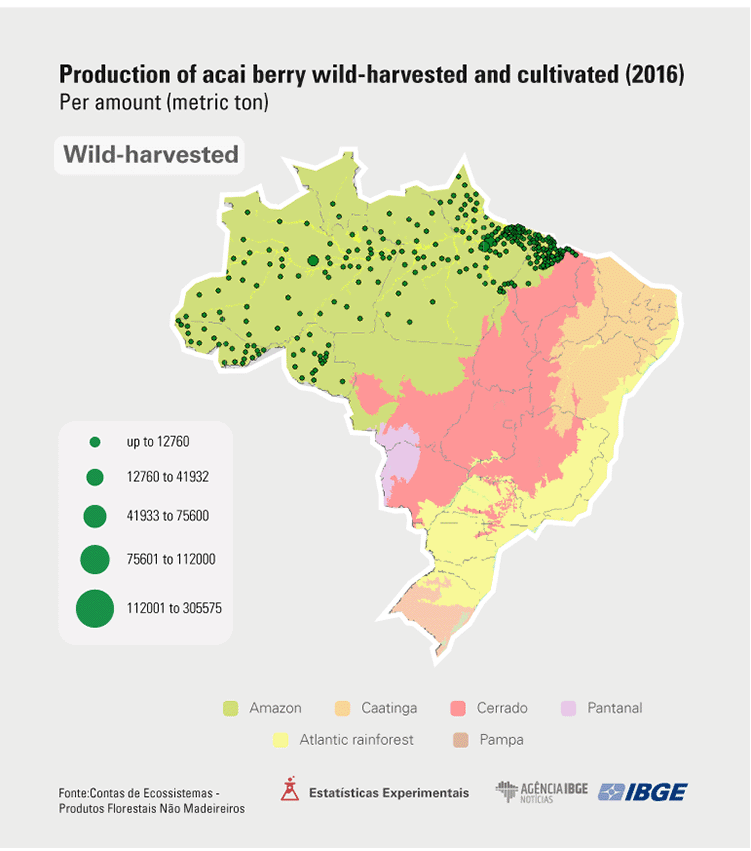Brazil releases experimental ecosystem accounts for condition of water and non-wood forest products

IBGE, the Brazilian Institute for Geography and Statistics released on 15 April two new experimental ecosystem accounting studies. The results are experimental since they are still in the testing and evaluation phase, but have been released to include society in the process of development of those indicators, from the initial stages.
The first study called “Ecosystem Accounting: Condition of Water Bodies” contains experimental indicators that characterize the condition of Brazil’s water bodies, disaggregated by biome (the Amazon, Cerrado, Atlantic Rainforest, Caatinga, Pantanal and Pampa), following the recommendations of the recently adopted SEEA Ecosystem Accounting framework. The selected statistics include indicators on water abstraction, the chemical and physical state of water, and the proportion of endangered aquatic species, and describe changes that have taken place between 2010 and 2017. The study that was develop in close collaboration with ANA – the Brazilian water agency - also presents a qualitative and quantitative water balance of micro-basins in the biomes, by compiling information from different databases, having 2016 as year of reference.
Some of the main results are that in terms of water availability in the Amazon Biome scored best with more than 95% of its micro-basins, in excellent condition, while in the Caatinga (a semi-arid region) 44% of basins were in critical condition, due to water abstraction mainly for agricultural use (75%). In the Cerrado Biome the demand for water resources increased (27%) and as a result showed a drop in good level of water quality by 14 percentage points, both associated with agricultural expansion. Another finding is that the Atlantic Forest Biome where 58% of the Brazilian population is concentrated and 55% of water abstraction is for urban-industrial purposes, has the highest number of threatened aquatic species (11%.)
The second study called “Ecosystem Accounts: Non-Wood Forest Products” describes experimental estimates on the supply of this provisioning ecosystem service both in physical and monetary units, between 2006 and 2016, disaggregated by 10 different products: acai (extracted and farmed), coagulated latex (extracted and farmed), yerba mate (extracted and farmed), heart of palm (extracted and farmed), Brazil nut, pequi (fruit and nut), babassu, carnauba (wax and powder) jaborandi and piassava.
It was found that the Amazon and Cerrado biomes have the greatest variety in the non-timber forest products analyzed.
An estimation of the monetary values of the NTFP provision service was also carried out in this experimental study, the methodological details of which can be found in the publication.
A key result is that from 2006 to 2016, the value of production in monetary terms, of extracted Açaí showed a 398% increase in the Amazon Biome, in addition to the Pequi nut, which in the Amazon increased by 221%. Another product with a positive performance was Yerba Mate in Mata Atlântica, which increased in monetary terms by 385%.

For more information about the Brazilian environmental-economic accounts, see:
IBGE Ecosystem Accounts Webpage
This article was based upon the two press releases originally published by IBGE on 15 April 2021.
Photo by Isaac Quesada on Unsplash
